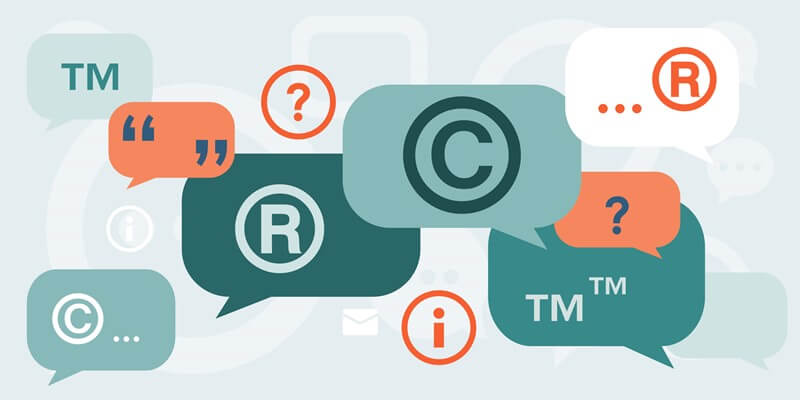- patents – covering functional aspects of a product, process or invention
- design rights – protecting the visual appearance of a product and giving you exclusive rights for that appearance. These can be either registered or unregistered.
- trade mark – relating to business or product names, phrases and logos
Intellectual property should never be underestimated and always prioritised.
Whether you’re an inventor, company owner, developer or stakeholder, your IP is what distinguishes you in the market, keeps you competitive and grows your business.
Intellectual Property is a complex area covering trade secrets, trade marks, intellectual property protection, copyrighted works, etc. requiring the services of legal specialists.
Costs must also be carefully planned for. A UK patent, for instance, has no influence outside of the country; to protect your IP abroad, further patents would be necessary.
In research and development for electronics, software and industrial designs, there are four types of intellectual property:
- Background IP: any knowledge/IP supplied to the development team(s) / partner(s) at the start of an innovation project or collaboration.
- Foreground IP: knowledge/IP produced by the development team(s) / partner(s) during the project’s duration.
- Sideground IP: relevant knowledge/IP produced outside of a particular collaborative innovation project by any of its development partners
- Postground IP: knowledge produced after the end of a development or collaborative innovation project.
Background IP vs Foreground IP
A question we’re commonly asked is “Who will own the intellectual property that is generated if I work with ByteSnap?”
Here, we take you through the two types of IP, which we use in electronics product design contracts – background IP and foreground IP.

Background IP
Background IP is any intellectual property that existed before the contract started, and the parties own.
For example, a customer might come to us with a design of a lighting controller, and ask, “Can you make our next-generation lighting controller?”
The entire design of that original lighting controller is theirs. That doesn’t change.
The original design will always remain theirs.
Foreground IP
If we then do a design for them, paid by them, to generate their new lighting controller, that’s all foreground intellectual property.
That foreground IP is generated in the contract. Once they’ve paid for that, we will then assign them all that foreground IP, so they will then own all the IP.
Consequently, this will become part of their background IP on a future product design project.
In short, for any development that we do, we assign the intellectual property to you after full payment. We do not retain your IP.
However, we reserve the right to reuse generic IP between projects, in the sense of that we might design a part of the lighting control in the previous example – say the power supply – which we then use on a motor controller in another project.
There’s also Generic IP
The use of generic IP is commonplace among electronics and software design consultancies.
The reason consultancies are used in product design is that developments can be done more quickly and cost effectively – largely due to the use of generic IP.
It’s a bit of a touchy subject, particularly the reuse.
We’ve occasionally had businesses asking, “I’ve paid for you to do this design. What do you mean, you’re going to reuse it?”
No… we’re not referring to the background IP.
No, no, no – certainly not the foreground IP!
The generic IP – for the Bluetooth module? Yes; we reserve the right to reuse that bit of generic IP in the future, as is standard practice in electronics and software product design houses.
The fact is, design consultancies such as ByteSnap are continually building on previous experience. That helps us to grow, thrive, innovate – and, most importantly, bring value to customers.
Of course, building on previous experience is completely separate to designing a lighting controller for one company and then reselling the same design to someone else.
We would never, ever do that.
I’ve never heard of a UK design house doing that either; it’s unethical and, frankly, commercial suicide.
Common misconceptions around Foreground and Background Intellectual Property
Another one is that, in all the years the ByteSnap has been in operation, we’ve never actually had a conflict between two customers where they both wanted us to do exactly the same thing.
The fact is, customers always differentiate themselves.
Naturally, everyone wants something different. If something already exists in the market, it’s fairly unlikely someone is going want to do precisely the same design.
Our contracts mention background and foreground IP.
There are companies who carry out design work for people and then retain IP ownership at the end of the development.
Time and again, businesses have come to us having gone overseas for development work. They’ll have been quoted a low price for the development, and – happy with their apparent savings – they’ll get the project done.
However, the price will then creep up and continue rising… before they then realise that the design, they thought they owned, is, in fact, owned by the people who did the development.
They’re in the awkward and expensive position of being handcuffed to the IP developer/owner – and cannot manufacture the product without them.

You can avoid the unnecessary pain and excessive expense – a scenario that could even threaten your company’s future – by using a outsource development partner like ByteSnap – where you own the IP at the end of the project and upon account settlement.